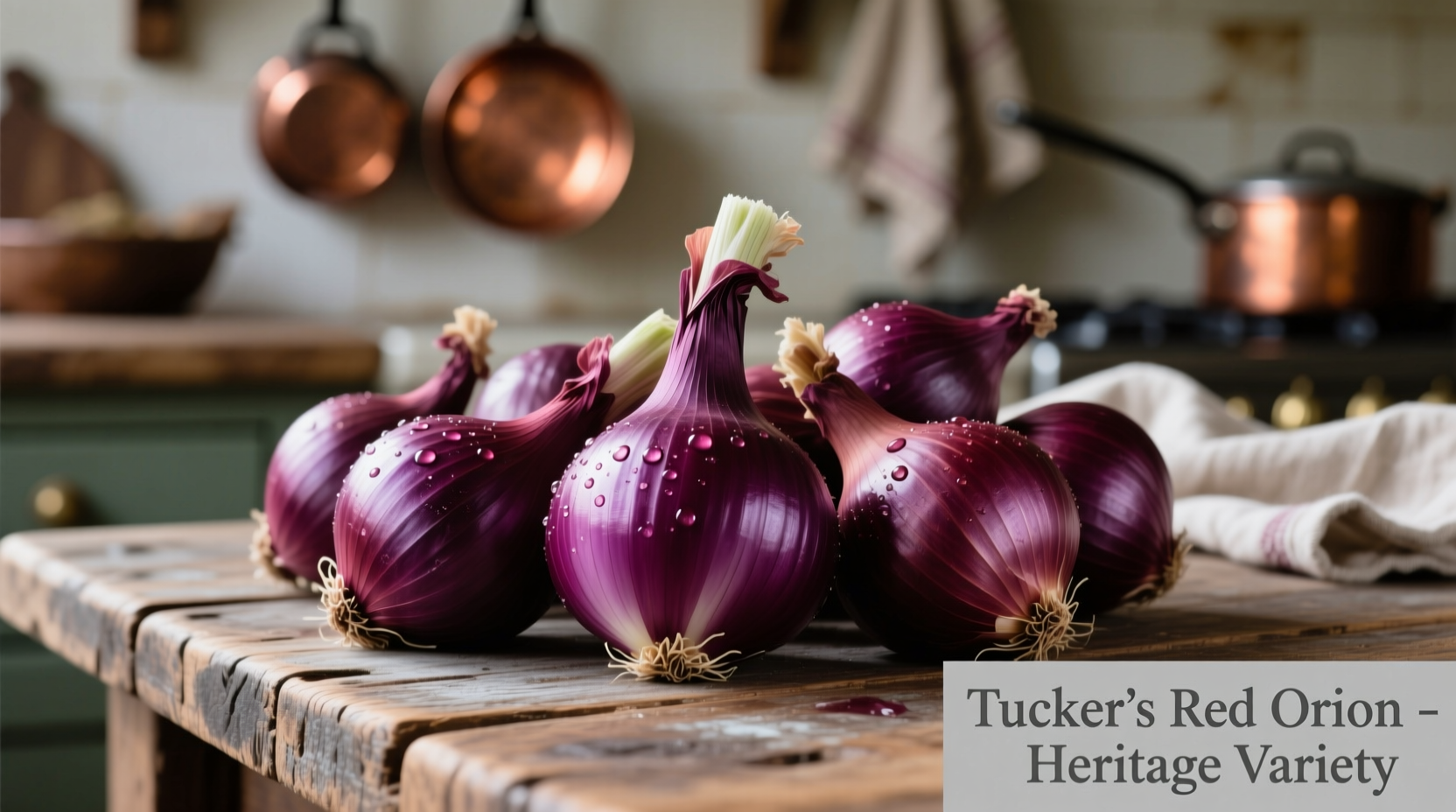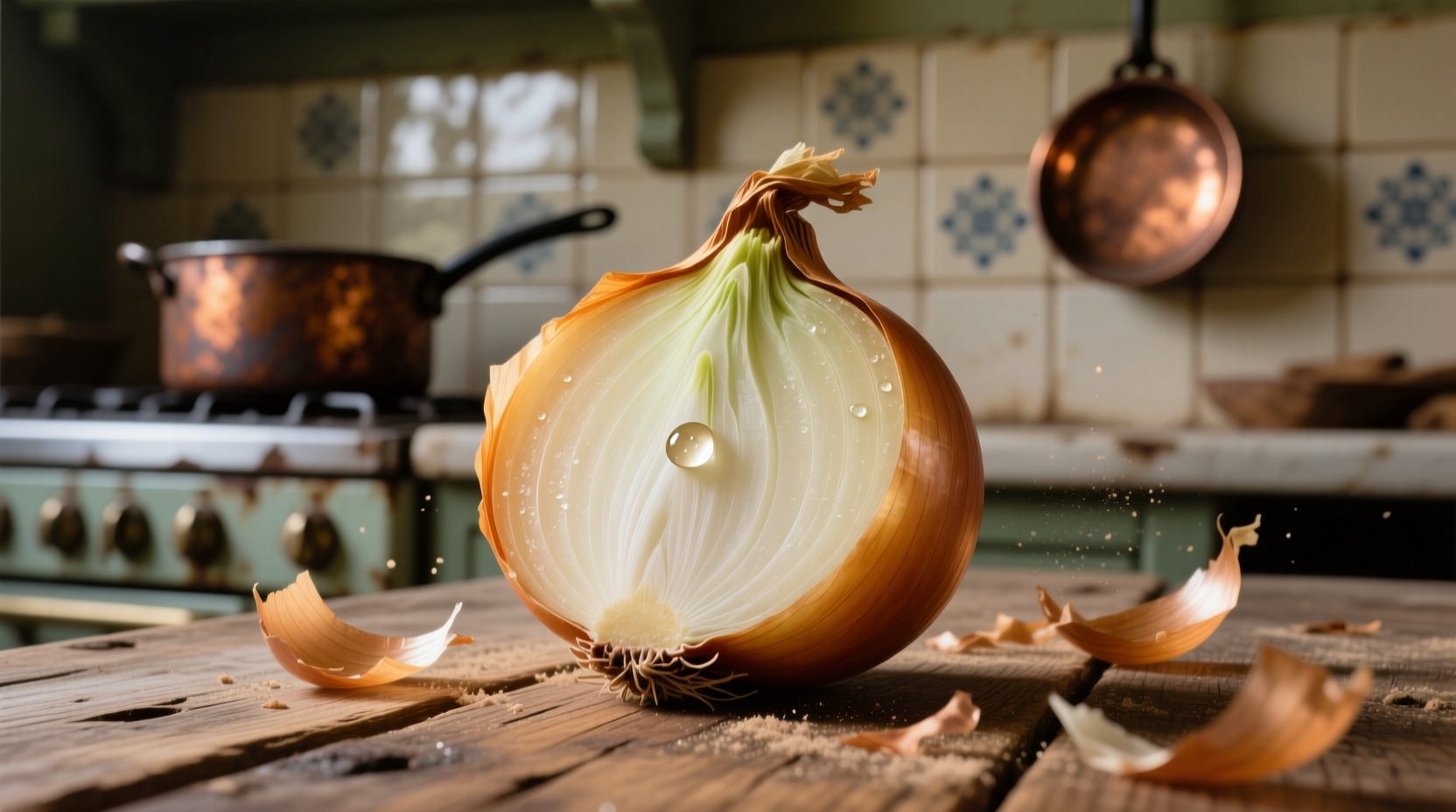Curious about this unique onion variety that's been making waves among heirloom enthusiasts? You're not alone. Gardeners and chefs increasingly seek Tucker's Red Onion for its exceptional flavor profile and historical connection to American agricultural heritage. This comprehensive guide reveals everything you need to know about cultivating, selecting, and using this remarkable heirloom variety.
The Historical Roots of Tucker's Red Onion
Understanding Tucker's Red Onion requires exploring its rich agricultural heritage. Developed by South Carolina farmer John Tucker around 1885, this variety became a staple in Southern gardens before nearly disappearing during the mid-20th century's agricultural consolidation. The variety's survival owes much to dedicated seed savers who recognized its unique qualities.
| Time Period | Development Stage | Key Historical Context |
|---|---|---|
| 1880-1920 | Initial cultivation | Developed as a garden variety for Southern homesteads |
| 1920-1950 | Regional popularity | Widely grown across the Carolinas and Georgia |
| 1950-1980 | Near extinction | Commercial farming favored uniform hybrid varieties |
| 1980-Present | Preservation efforts | Seed Savers Exchange and agricultural universities revived the variety |
Distinctive Characteristics of Tucker's Red Onion
Tucker's Red Onion stands apart from commercial red onion varieties through several distinctive features. The bulbs typically reach 2-3 inches in diameter with deep purple skin featuring characteristic white streaks. When sliced, the interior reveals concentric rings of vibrant purple that maintain their color better than many red onion varieties when cooked.
What truly sets Tucker's Red Onion apart is its flavor profile. Unlike the sharp bite of standard red onions, Tucker's variety offers a remarkably mild, sweet flavor with subtle earthy notes. This makes it particularly well-suited for raw applications where onion flavor should complement rather than dominate other ingredients.

Practical Growing and Selection Guidelines
Gardeners interested in cultivating Tucker's Red Onion should note its specific requirements. This variety performs best in well-drained, sandy loam soils with a pH between 6.0-6.8. Unlike modern hybrids, Tucker's Red Onion has moderate disease resistance and requires careful attention to watering schedules to prevent rot.
When selecting Tucker's Red Onions at farmers markets or specialty grocers, look for firm bulbs with dry, papery skins free from soft spots. The characteristic white streaks in the purple skin should be visible. Avoid bulbs with green sprouts emerging, as this indicates age and potential flavor degradation.
Culinary Applications and Flavor Pairings
Chefs prize Tucker's Red Onion for its versatility in both raw and cooked applications. The mild flavor makes it ideal for:
- Fresh salsas and pico de gallo
- Salads where onion flavor should complement rather than dominate
- Pickling for vibrant color retention
- Caramelizing for milder, sweeter results than standard red onions
For optimal flavor extraction, try slicing Tucker's Red Onion thinly and allowing it to rest for 15 minutes before use. This process enhances the natural sweetness while reducing any potential sharpness. The variety pairs exceptionally well with tomatoes, fresh herbs, citrus dressings, and grilled meats.
Availability and Preservation Challenges
Despite growing interest, Tucker's Red Onion remains challenging to find in conventional grocery stores. Your best options for sourcing include:
- Specialty seed catalogs (Seed Savers Exchange, Baker Creek Heirloom Seeds)
- Regional farmers markets, particularly in the Southeastern United States
- Community Supported Agriculture (CSA) programs focusing on heirloom varieties
One significant limitation to consider is Tucker's Red Onion's shorter storage life compared to commercial varieties. While standard red onions can last 2-3 months in proper storage, Tucker's variety typically maintains quality for only 4-6 weeks. Store in a cool, dark place with good air circulation, but check regularly for soft spots or sprouting.
| Onion Variety | Flavor Profile | Storage Life | Best Culinary Uses |
|---|---|---|---|
| Tucker's Red | Mild, sweet with earthy notes | 4-6 weeks | Raw applications, pickling, mild caramelizing |
| Standard Red Onion | Sharper, more pungent | 2-3 months | Cooking, grilling, stronger flavor applications |
| Vidalia | Very sweet, low sulfur | 2-3 months | Raw consumption, salads, sandwiches |
| Yellow Onion | Strong, pungent when raw | 4-6 months | Cooking, caramelizing, flavor base |
Preserving This Heirloom Treasure
The continued availability of Tucker's Red Onion depends on active preservation efforts. According to the USDA National Plant Germplasm System, heirloom varieties like Tucker's Red Onion maintain crucial genetic diversity that commercial hybrids often lack. Agricultural researchers at Clemson University have documented how preserving varieties like Tucker's Red Onion provides valuable genetic resources for developing disease-resistant strains in the future.
Home gardeners can contribute to preservation by saving seeds from mature plants. Allow select onions to bolt and produce flowers, then collect the black seeds from the dried seed heads. Properly stored in cool, dry conditions, these seeds remain viable for 2-3 years.
Frequently Asked Questions
What makes Tucker's Red Onion different from regular red onions?
Tucker's Red Onion features a milder, sweeter flavor profile with distinctive white streaks in its purple skin. Unlike commercial red onions, it has lower sulfur content, making it less pungent when raw. The variety also has a shorter storage life of 4-6 weeks compared to standard red onions' 2-3 months.
Can I grow Tucker's Red Onion in my home garden?
Yes, Tucker's Red Onion grows well in home gardens with well-drained soil and full sun. Plant sets or seeds in early spring after the last frost. The variety performs best in USDA zones 5-9 and requires consistent moisture during bulb formation. Note that it has moderate disease resistance compared to modern hybrids.
Why is Tucker's Red Onion considered an heirloom variety?
Tucker's Red Onion qualifies as an heirloom because it's an open-pollinated variety developed before 1950 that has been passed down through generations. Unlike modern hybrids, it breeds true from seed and maintains genetic diversity. The variety was developed around 1885 by South Carolina farmer John Tucker and nearly disappeared before preservation efforts revived it.
Where can I find authentic Tucker's Red Onion seeds?
Authentic Tucker's Red Onion seeds are available through specialty seed companies focusing on heirloom varieties, including Seed Savers Exchange and Baker Creek Heirloom Seeds. Some regional farmers markets in the Southeastern United States may also offer bulbs for planting. Be cautious of generic "red onion" seeds that may not be the authentic Tucker's variety.











 浙公网安备
33010002000092号
浙公网安备
33010002000092号 浙B2-20120091-4
浙B2-20120091-4